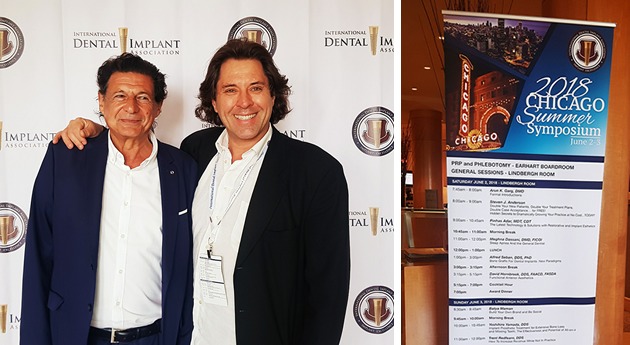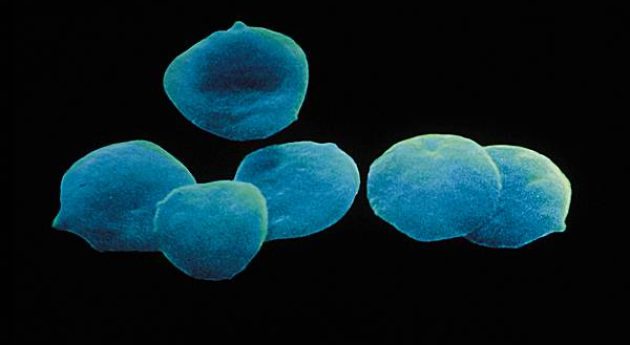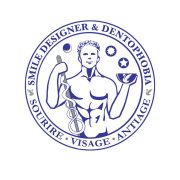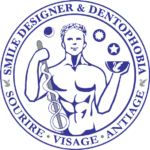THE PRP : PLATELET-RICH PLASMA
the pioneer of REGENERATIVE medicine
autologous platelet concentrate for IMPLANT SURGERY, AESTHETIC MEDICINE, scars, arthritis
the first medical revolution
THE PLATELET-RICH PLASMA : PRP
at the origin of the first revolution in REGENERATIVE DENTISTRY
WHAT IS THE platelet-rich plasma - prp ?
The PRP
(Platelet-Rich-Plasma)
or
Platelet Rich Plasma
is the first generation of liquid platelet concentrate that can be injected into soft tissue (dermis, connective tissue).
It is obtained after centrifugation of a few tubes of blood taken from the patient (blood test) and the addition of an anticoagulant of animal origin (porcine).
Thanks to this anticoagulant, this platelet concentrate cannot rapidly mass : fibrinogenesis is blocked and fibrin clot formation is made impossible. A plasma substrate is recovered in these centrifuge tubes. It contains a concentrate of blood platelets. The PRP remains liquid, thanks to the anticoagulant, long enough to be reinjected into the patient’s tissues.
PRP is used in many medical specialties. He became famous for his aesthetic therapies called “anti-aging” or “therapies” to accelerate the scarring process in case of accident or post-operative scarring.
PRP treatments are said to be autologous : that is, prepared from the patient’s own blood. As the sample is taken in a sterile closed circuit, there is no risk of cross-contamination with an external agent. The only “weak link” in the chain is the anticoagulant of exogenous animal origin.
Thanks to the growth factors contained in the platelets, PRP promotes the synthesis of collagen fibers, which is the fibrous structure of the skin, but also of cartilage and bone.
Growth factors, contained in platelets, promote the healing process both in the neoformed bone and in soft tissues such as the connective tissue of the oral mucosa after surgery. They stimulate the patient’s own scar cells to optimize the regeneration of neoformed connective tissue of mucous membranes and bone tissue.
It thus allows a faster and more complete healing.

Professor Alfred Sebban, with Dr. Jerome Weinman, at the symposium organized by the “Dental Implant Association” of Professor Arun K. Garg’s “Dental Implant Association” in Chicago in 2018.
WHERE DOES THIS TECHNIQUE COME FROM?
In France as well as in the United States, the technique is not new: Orthopedists and sports physicians have been using it for years to treat tendon and joint injuries or complications from scars.
Dr. Arun K. Garg, DMD, Professor of surgery in the division of oral and maxillofacial surgery and director of residency training at the University of Miami Leonard M. Miller School of medicine in Florida, was one of the first to describe this technique some 20 years ago. He applied it to the aesthetics of oral surgery protocols. He is currently the promoter of one of the largest American medical training companies whose conventions are constantly touring all the major cities in the United States of America. He is the promoter of the largest scientific society in implantology in the USA: The International Dental Implant Association, of which Dr. Jérôme Weinman is a member.
His protocols are taken up and taught in the university diplomas of implantology and maxillary reconstruction, in particular thanks to the transfer of techniques initiated by Professor Alfred Sebban in Paris.
THE DIFFERENT AREAS
USE OF THE PRP
PRP is used in implant surgery
PRP is used in intraoral injections, during bone grafts, with all types of grafts or during dental implant placement to increase the healing and regenerative capacity of tissues and grafts and also to promote osseointegration of dental implants.
PRP is used in aesthetic medicine
A Platelet Rich Plasma injection in facial aesthetic medicine is a treatment indicated for patients who wish to rejuvenate and beautify the skin of the face and lips.
But not only because it is used in aesthetic medicine for the neckline, the back of the hands and bald areas of the scalp (alopecia).
PRP is used to reduce scars
Scar reduction with PRP injections is a new therapy that works on the same biological regenerative model of the skin.
PRP is used to alleviate joint pain
Pain in joints that have been prematurely worn out by repeated exertion or trauma can be significantly alleviated by regenerating joint tissue with PRP injections.

YOU ARE UNIQUE!
CLINICAL CASES REGENERATIVE DENTISTRY
THE USE OF PRP AND PRF IN ORAL SURGERY
THE ACTORS OF THE PLATELET-RICH-PLASMA MECHANISM OF ACTION

Plasma
Plasma contains factors essential for cell survival such as nutrients, vitamins, hormones, minerals and proteins.
Among the plasma proteins are the molecules essential for coagulation and the formation of the fibrin clot that serves as a matrix for cell reconstruction.
The plates
Platelets are key factors in the regeneration mechanisms of biological tissues. They secrete essential growth factors (FGF, PDGF, TGF-B, EGF, VEGF, IGF).
These factors are involved in the migration, differentiation and proliferation of stem cells and the stimulation of cells such as fibroblasts and endothelial cells, to induce the secretion of a new extra-cellular matrix and neo-vascularization respectively.
- The formation of a three-dimensional fibrin network.
- The secretion of chemoattractant molecules by platelets and leukocytes present in the network.
- Macrophage and stem cell migration.
- Stem cell proliferation.
- The differentiation of stem cells into the different cell types necessary for the restoration of the affected tissue.

the preparation of the platelet-rich-plasma

A blood sample is taken from the patient in 1 to 8 vials of 10 ml (a small amount compared to the total volume of blood and equivalent to a conventional blood test).
In contrast to PRF, the collection tubes contain an anti-coagulant treatment so that the plasma remains liquid and can be injected with a long operating time.
Centrifugation of blood vials allows the separation of its components and the recovery of a concentrate very rich in platelets. Two centrifugations are possible in some cases to have a very rich fraction in growth factors in a small injectable volume.
A portion is injected into and around the surgical site.
Another part may be mixed with autogenous, allogenous, xenogenic or alloplastic (synthetic) bone that is used to fill the bone defect.
All types of surgical procedures such as pre-implant grafts. In particular, sinus fillings with, depending on the case, the possibility of immediate implant placement, and filling of bone deficits after extraction. But it also concerns the healing of gingival soft tissues after implant placement or during gingival grafts or buried connective tissue.
Thanks to the work of genetic engineering and biochemistry over the last ten years, bone regeneration is faster, in greater quantity and quality, and above all with a safety margin compared to other methods.
Autologous serum grafting techniques, essentially PRP, are validated by Professor Meningaud, head of the maxillofacial surgery department at the Henry Mondor Hospital
The autologous serum grafting techniques used, for The fibrin clot form the PRF, are validated by Dr. Joseph Choukroun.
WE ANSWER YOUR QUESTIONS
ON THE prp
The dentist answers your most frequently asked questions. If your clinical case is not listed, please contact him for a consultation.
A painful sensation at the time of the injection : It can be felt or apprehended during the injection. An inhalation of MEOPA helps to reduce the sensation of pain. An EMLA patch (anesthetic) applied before the session by the patient can be prescribed to anesthetize the skin in the area to be pricked.
A burning sensation after the injection: A moisturizing and soothing anti-inflammatory cream can be prescribed or administered after the session. It should be applied for several days.
Appearance of papules after the injection: They usually disappear within a day.
Bruises related to the blood test may occur and/or at certain injection points : an anti-hematoma cream may be prescribed.
PRP is derived from the patient’s own blood: therefore, the risks of side effects are rare. However, PRP is enriched with adjuvants of animal origin: the anticoagulant which allows the fibrin not to clump, so that the product remains liquid.
Some slight inflammatory reactions : edema and redness are observed sometimes in the hours following the injection. They gradually disappear in a few days.
The interaction of PRP and certain drugs : such as isotretinoin and Roaccutane may produce undesirable reactions.
To avoid any risk, current medication or medication started during the treatment must be reported and possibly suspended.
Infected skin lesions are a contraindication to blood sampling and the use of PRP.
Skin lesions with abnormal cell proliferation: in case of doubt, the aesthetic doctor will refer the patient to a dermatologist for a preliminary diagnosis.
Patients suffering from a blood disease such as Lupus with thrombocytopenia are not eligible for PRP techniques. If in doubt, a blood test with a blood count will be performed to check the number of platelets.
Autoimmune diseases : in particular lupus is to be taken into consideration.
The use of antiaggregants such as ASPRINE (Kardégic), CACAO, and CURCUMA, at the same time as the blood test is taken, is contraindicated, as is the case for all treatments by subcutaneous injection.
Photosensitizing drugs: such as certain antibiotics or antidepressants or those containing beta-carotene. In this case, PRP injections in the skin are also contraindicated.
The effects of Platelet Rich Plasma on the fetus are not known: as a precautionary measure, treated women should use contraception during the entire treatment period. In case of pregnancy during treatment, the doctor must be informed immediately and the treatment must be stopped. Women who are breastfeeding cannot take part in the treatment either.



